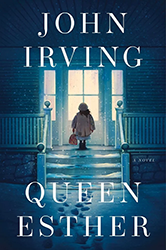Natalia Ginzburg’s Happiness, as Such is an arresting, entertaining read and a book I plan to gift to friends. As I read it, I wondered why the only bit I knew of Ginzburg’s work beforehand had been her essay “He and I.” Her book should be required reading as her writing is witty, cutting, and wonderful.
Happiness, as Such is part-narrative, part-epistolary novel in its structure — that is, the characters write a series of letters to each other as the book unfolds. They are all writing to their son/brother/lover, Michele, who has gone away, due to a mixture of his radical politics and his aimless nature. Each character is enamored with Michele, but his responses to them are so cursory he comes across as completely self-involved. The characters revealed in the letters are fascinating, particularly the forty-three-year-old mother, Adriana. She is both a force and a woman rendered helpless by her ties to her children and ailing husband. Adriana, like all the characters, makes moving observations about happiness and human relationships. She tells Michele that her memories with his father “weren’t happy memories because your father and I were never happy together…but people don’t love each other only for happy memories.”
The book becomes a meditation on the nature of happiness as each character mulls over it. In closing a letter, Adriana sends her son “happiness, if there is such a thing as happiness. A possibility that we can’t entirely exclude, despite so rarely seeing evidence of it in this world that’s been given to us.”
Mara, the girl Michele may have gotten pregnant before fleeing, observes after a series of love affairs have gone sour, “you see, happiness doesn’t last long. Everyone knows that.” Mara’s most recent lover, a man she dubs “the Pelican,” wishes her “happiness, if there such a thing as happiness” in what has by now become the book’s refrain. The Pelican concludes he doesn’t believe it’s real, “but other people do, and who is he to say they are wrong.”
Ginzburg effectively uses the characters to remark upon the fleeting nature of this emotion, as when Adriana concludes that happiness can spring up in the midst of arguing or upon realizing that one no longer hates an estranged spouse. Upon this realization, Adriana noticed “the sunset, beautiful pink clouds over the city, and for the first time in a long time…was almost happy.” However, she laments in a letter, we seldom notice such moments when we’re in the midst of them.
Read this book for its lessons on life, but also for its mix of levity and gravity. Ginzburg is a master of mixing dark and light — just when a character is despairing upon the world, a line will be thrown in that’s so snarky you’ll spit your tea out in laughter.
Ginzburg provides perfect counterweight to starker points of the plot, showing us the true range of her talent. She could blend humor and tragedy deftly, which makes sense as her life offered plenty of it. She had to publish under a pseudonym to get around laws that kept Jews from publishing, and she lost her husband to fascist torture. We should all read her work, especially this book, which is, in the end, a treatise on the transient nature of joy in our all-too-human lives.
Emily Sulzman is a writer and PhD student studying literary nonfiction at the University of Cincinnati.





